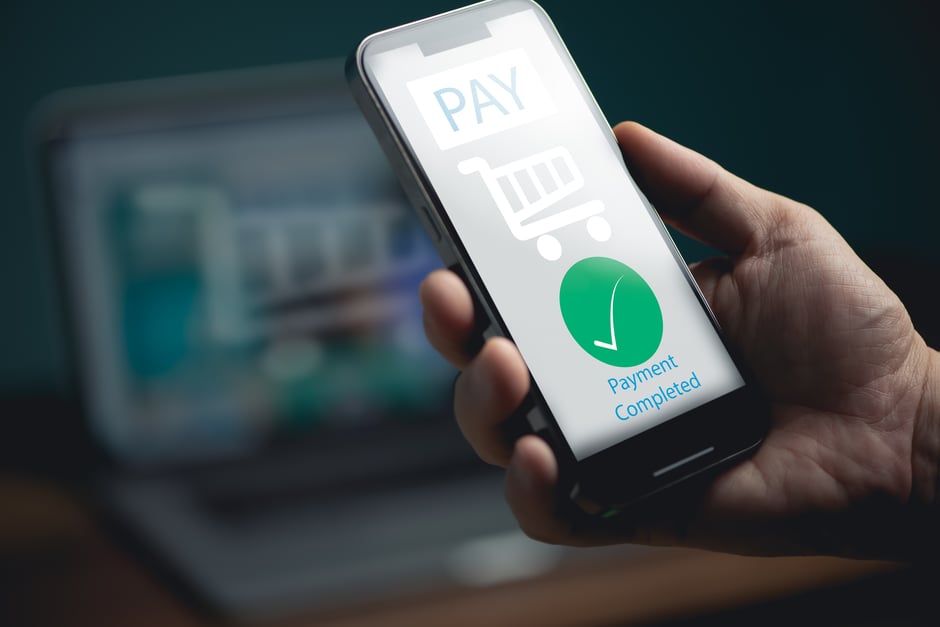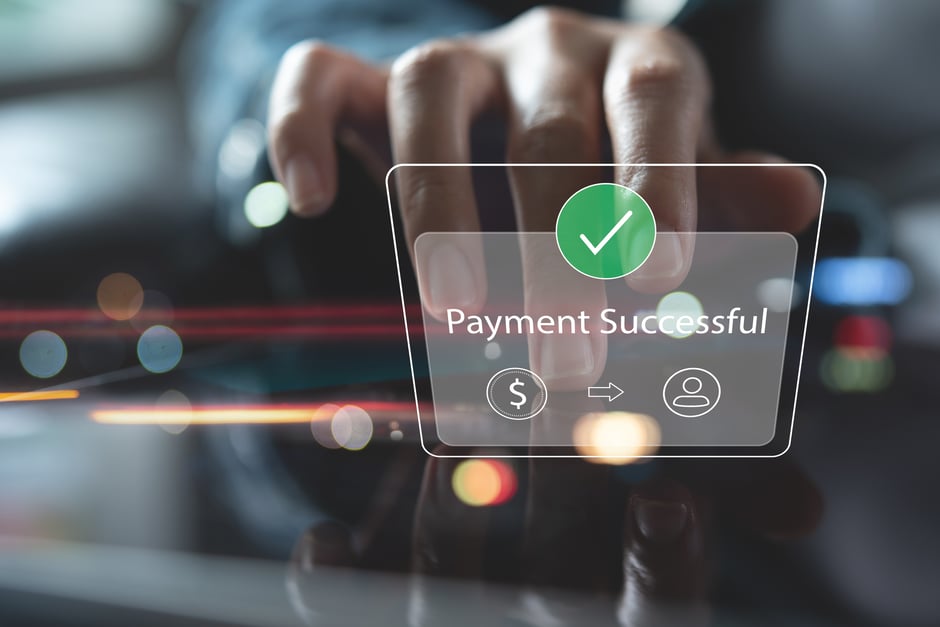4 min read
Why Digital Wallets Belong at the Core of Your Payment Strategy
October 10, 2025
The digital wallet has quietly moved from fintech novelty to financial infrastructure. Once seen as a convenient way to make payments on the go, it’s now at the centre of how consumers expect to pay, get paid, and interact with businesses.
In Canada, this shift is being led by a new generation. According to a recent Interac survey, nearly seven in 10 Gen Z adults (69%) have embraced mobile wallets, outpacing Millennials (60%), Gen X (44%), and Boomers (27%). And six in 10 (63%) say they prefer to leave their physical wallet at home for short trips. This is a signal that digital wallets are fast becoming a primary financial touchpoint for Canadians.
The rapid adoption of digital wallets is also driving real economic growth. Canada’s prepaid card and digital wallet market grew at a compound annual growth rate of 11.1% from 2020 to 2024, reaching US$24.63 billion. It’s projected to hit US$32.61 billion by 2029. For organizations that rely on disbursements, payouts, and customer transactions, digital wallets represent a new strategic opportunity to transform one-time payments into ongoing relationships.
First Things First: What is a Digital Wallet?
A digital wallet is a secure, app- or web-based account that stores funds or payment credentials and enables quick, digital transactions. Consumers use them every day to tap their phones at checkout, make online purchases with a single click, or send money without handling cash or cards.
But this definition is evolving. Digital wallets are no longer just convenient front-end tools—they’re becoming financial hubs. Modern wallets can hold funds directly, support loyalty programs and rewards, integrate personal finance tools, and even serve as gateways for digital identity.
For businesses, this shift represents a way to own the customer relationship, rather than handing it off to third parties at the point of payment. Instead of treating wallets as endpoints, organizations can use them as strategic platforms for engagement, loyalty, and growth.

Digital Wallets Transform Payouts Into Ongoing Engagement
Many organizations still treat disbursements as simple endpoints: money goes out, the transaction is complete, and the relationship ends there. Whether it’s a refund, a tip, a gaming payout, or a gig wage, the focus has traditionally been on moving funds quickly and efficiently, not on what happens next.
Digital wallets flip that model. Instead of pushing funds to external accounts, businesses can issue branded digital wallets that keep funds within their ecosystem. This turns a one-time transaction into the starting point for a longer relationship, where customers can hold, spend, and interact with their funds in new ways.
We’re already seeing this strategy in action:
- Amazon offers customers the option to receive refunds directly into their Amazon balance within four hours versus five days to their debit/credit cards. This keeps funds circulating within its ecosystem and encouraging repeat purchases.
- Uber enables drivers and delivery partners to access their earnings instantly through Uber-linked debit cards, effectively keeping funds within the platform while offering added convenience.
- In the gaming sector, FanDuel often deposits winnings directly into users’ in-platform wallets. While users can withdraw, many choose to reuse those funds to place additional bets, turning one transaction into the next touchpoint.
These examples are evidence that leading brands across industries are using wallet-based payouts to create stickier, more valuable customer and contractor relationships.
Why Digital Wallets Work: Speed, Trust, and Utility
Digital wallets have gained traction because they solve real problems for both consumers and businesses. Their rapid adoption is being driven by three key advantages: speed, trust, and utility.
1. Speed converts
Digital wallets remove friction at checkout and during disbursements. With one-tap payments, biometric authentication, and instant fund availability, transactions happen in seconds. Consumers get faster access to their money, and businesses see smoother experiences and higher conversion rates.
2. Trust through security
Advances in payment security have made digital wallets more secure than traditional card rails. Tokenization replaces sensitive data with single-use credentials, encryption protects data in transit, and biometrics ensure transactions are tied to the individual, not just a card number. Together, these features build confidence and reduce fraud risk.
3. Utility drives loyalty
Modern digital wallets are evolving into multi-functional financial hubs. They can store funds directly, integrate rewards and loyalty programs, support digital identity, and offer personal finance tools like real-time spend tracking. For businesses, this creates more opportunities to engage customers long after the initial transaction.
The Strategic Shift: Wallets as the New Account Layer
Traditionally, businesses have relied on external financial institutions to hold and manage customer funds. Digital wallets change that dynamic. By issuing their own branded wallets, businesses can become the account layer—creating environments where customers receive, hold, and spend funds without ever leaving the ecosystem.
This can have powerful advantages. When customers keep balances in a wallet tied to your platform, you gain visibility into transaction patterns, create more touchpoints for engagement, and build loyalty that extends beyond the initial payment. Over time, this creates network effects. The more activity that happens inside your ecosystem, the more convenient it becomes for users to stay there.
Starbucks is a well-known example of this in action. By encouraging customers to preload funds into its app, Starbucks effectively holds billions of dollars in stored value. Customers tap into loyalty rewards, make purchases seamlessly, and often keep balances in their wallets, all of which deepen their relationship with the brand.
For financial institutions and digital businesses, wallets offer a way to rethink their role in the payment flow—not just as intermediaries, but as the financial hubs around which customer relationships are built.

What It Takes to Build a Digital Wallet Strategy
Turning digital wallets into a strategic asset requires more than plugging a new feature into existing systems. To deliver the kind of seamless, secure, and branded experiences customers now expect, organizations need a modern payments infrastructure.
A strong digital wallet strategy is built on a few core capabilities:
- On-demand wallet creation
The ability to issue wallets quickly and at scale—whether for customers, employees, or partners—without heavy manual processes. - Real-time reconciliation and tracking
Instant visibility into wallet balances, transaction histories, and fund flows is essential for maintaining trust and operational efficiency. - Multi-rail payment routing
Supporting multiple payment types (EFTs, Interac e-Transfer, etc.) ensures wallets can interact seamlessly with the broader payments ecosystem. - Regulatory compliance and risk management
As wallets grow in scale and functionality, businesses have to meet regulatory standards and manage risk with the same rigor as traditional financial institutions.
This is where DCPayments’ Virtual Wallet offering comes in. Our infrastructure is designed to help organizations act like digital financial institutions—issuing branded wallets, keeping funds within their ecosystem, and offering secure, flexible payment experiences. Through industry-leading APIs, SFTP, and Direct Entry capabilities, we provide the foundation to launch and scale a modern digital wallet strategy.
A New Financial Layer is Taking Shape
Digital wallets have moved far beyond tap-to-pay convenience. They’re becoming the infrastructure layer through which payments, loyalty, identity, and customer relationships are built. In Canada, adoption is accelerating rapidly and the market is projected to grow steadily over the next five years.
For businesses and financial institutions, this is an opportunity to own the account layer, strengthen customer relationships, and create new value inside branded financial environments. Those who build the right foundation now will be positioned to shape how money moves, and how customers engage, in the years ahead.
Explore how DCGroup’s Virtual Wallet can help you build your digital wallet strategy >
